 |
Sebastian Teachers' ChoirThe "Sebastatians" teacher's choir has been operating since 2012. The founder of the Yerevan State Chamber Choir, Honored Artist Harutyun Topikyan, was the conductor at the foundation of its formation. It is a four-part, open choir, composed of educators from the educational complex. The choir performs Komitas' spiritual and secular songs, medieval hymns, works by modern Armenian composers, and disseminates them through educational, cultural, and patriotic campaigns-concerts, educational liturgies, and organizing and participating in national rituals-festivals. |
 |
Aghitu Monument and Tanahat MonasteryThe Tanahat Monastery, or as the locals call it, the Red Monastery, is located 25 km southwest of Sisian, near the village of Arevis. Stepanos Orbelyan called the monastery a “great monastery of virtues,” where numerous legends about the holy life of ascetics and lay clergy were woven. During our trip, we also presented the unique monument of the 6th-7th centuries in the village of Aghitu. |
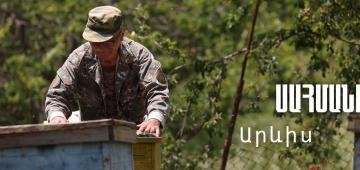 |
Arevis
The village of Arevis is located about 20 km from Sisian, but due to the poor road, it takes hours to reach the village.
Officially, Arevis has 41 residents, who live in the village intermittently, coming in the spring for agriculture and beekeeping. In the winter, barely ten residents remain in Arevis. Arevis is 4 km away from the enemy, but the reason the village has no residents is not at all its proximity to the border, but the lack of living conditions.
|
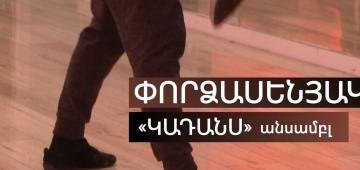 |
"Kadance" ensembleThe "Kadance" ensemble, which has a history of more than 20 years, has been reorganized, and a dance group has been added to the famous musical quintet. If in the beginning "Kadance" performed mainly the works of Astor Piazzolla, then over time the ensemble has expanded its performances to include works by European, American, Russian and Armenian classical and contemporary composers. From now on, "Kadance" will perform in a new way and in a new format. |
 |
Sisian: St. Gregory the Illuminator ChurchAfter the destruction of the Syunik principality of Shaghat and the monastery by Persian troops in the 360s, the Syunik monastery became the main sanctuary of the Syunik principality and until the 9th century was the episcopal seat of Syunik and the center of the ministerial dynasty. In the 80s of the 6th century, the Syunik princess Varazdukht built the St. Gregory the Illuminator temple on the site of the ancient temple of the monastery, which is now the visiting card of Sisian. |
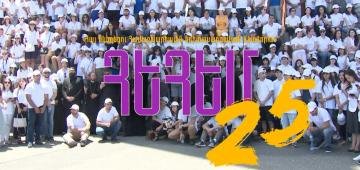 |
ACYO 25The World Armenian Church Youth Organization celebrates its 25th anniversary this year. It all began in 2001, when Armenia celebrated the 1700th anniversary of the proclamation of Christianity as the state religion. Under the direction of His Holiness Karekin II, Catholicos of All Armenians, a youth office was established, the goal of which was to activate the involvement of youth in the life of the Armenian Church. It was on the basis of this structure that the World Armenian Church Youth Organization- the ACYO, was established years later. |
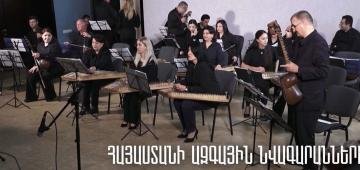 |
State Orchestra of National Instruments of ArmeniaThe State Orchestra of National Instruments of Armenia was established in 2005 on the initiative of Ara Gevorgyan and conductor Norayr Davtyan. It has undertaken a mission to preserve and develop the folk orchestral performing art formed in Armenia. From film music to adaptations of classical works, the orchestra presents national instruments in a new way. |
 |
OghbiOne of the 60 abandoned villages in Vayots Dzor is Oghbin. It is not known what the name of the settlement means or how it is explained. The village borders Azerbaijan, located about 8 km northeast of the village of Khndzorut. The only remaining witness to the abandoned village is the Oghbin church, built in 1666 and carved into the rocks.
|
 |
Martirosats MonasteryThe 13th-century rock-cut Holy Mother God Church in the village of Martiros in Vayots Dzor is the largest rock-cut architectural complex in Armenia after Geghard. It is built entirely inside Mount Nzar. The square-shaped complex consists of a vestibule, a prayer room, and a church. It is entirely carved into the rock, with only a small entrance from the outside, which was much more inconspicuous in its time. |
 |
The history and daily life of the border village of KhndzorutKhndzorut was founded by Armenians who migrated from the Khoy and Salmast regions of Persia as a result of the Russo-Persian War of 1826-1828. The residents of Khndzorut settled in the current area of the village later, starting in 1969. The history of Khndzorut is in the area called "Old Village", which is above the village. |
 |
State Dance Ensemble of ArmeniaThe 65-year-old State Dance Ensemble of Armenia operates with youthful enthusiasm, working on new productions in the rehearsal room and correcting previously performed ones. The parent company is facing financial problems, but if they are resolved, they will have new costumes and new instrumentation options. |
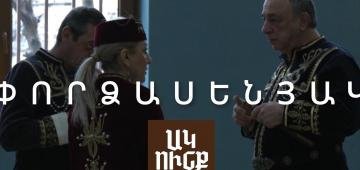 |
"Akunk"'s new project: the songs and dances of "David of Sasun"The "Akunk" ethnographic ensemble, which has a half-century history, presents songs and dances from all parts of historical Armenia. A few of the founding members have remained in the group, and it is they who pass on the decades-old traditions of Akunk to the newcomers. Currently, together with the group's artistic director, musicologist Artur Shahnazaryan, they are developing songs and dances from the epic "David of Sasun", which will soon be presented to the public. |
